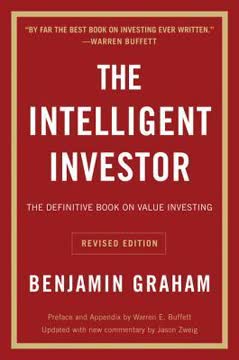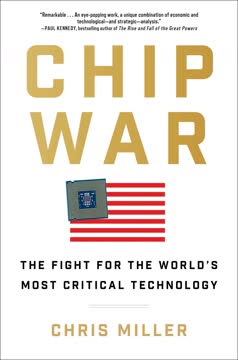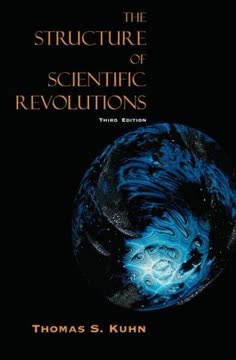Key Takeaways
1. Building trust and relationships is crucial for US-China cooperation
"I had learned that the Chinese valued authenticity and had come to expect me to speak my mind."
Personal connections matter. In dealing with China, Paulson found that building personal relationships and trust was essential for making progress on complex issues. This approach allowed for frank discussions and helped overcome cultural barriers.
Key relationships Paulson developed:
- Wang Qishan: From banker to vice premier
- Zhou Xiaochuan: Central bank governor
- Wu Yi: Vice premier and "Iron Lady"
Consistency and authenticity. Paulson's direct communication style, while sometimes at odds with Chinese cultural norms, ultimately earned him respect and allowed for more productive negotiations. By consistently demonstrating genuine interest in China's development and environmental issues, he built credibility with Chinese leaders across the political spectrum.
2. Economic interdependence shapes US-China diplomatic dynamics
"The Chinese leaders understood that to further their economic transformation they need the continued goodwill and cooperation of the U.S. and other countries that, in so many ways, continue to dominate the global economic system."
Mutual benefits and challenges. The US-China economic relationship is characterized by deep interdependence. China relies on US markets and expertise, while the US benefits from Chinese manufacturing and investment.
Key areas of economic interaction:
- Trade: China as a major exporter to the US
- Investment: Chinese holdings of US Treasury securities
- Technology transfer: US companies operating in China
- Financial markets: Chinese companies listing on US exchanges
Balancing act. Both countries must navigate competing interests, domestic pressures, and global responsibilities. This interdependence creates opportunities for cooperation but also potential flashpoints, particularly around issues like trade imbalances and market access.
3. China's rapid growth brings environmental and social challenges
"The toll was startling: in 2007 the World Bank estimated that pollution cost China 5.8 percent of GDP annually and caused 750,000 premature deaths each year."
Environmental crisis. China's breakneck economic growth has come at a severe environmental cost, with air and water pollution reaching crisis levels in many areas. This not only impacts public health but also threatens long-term economic sustainability.
Major environmental challenges:
- Air pollution in major cities
- Water scarcity and contamination
- Soil degradation and food safety concerns
- Deforestation and biodiversity loss
Social pressures. Rapid urbanization and income inequality have created social tensions. The Chinese government faces the challenge of maintaining economic growth while addressing environmental concerns and ensuring a more equitable distribution of wealth.
4. Strategic Economic Dialogue: A framework for bilateral engagement
"The SED was constructed so that the deliverables were negotiated and nailed down between our semiannual conclaves."
Structured engagement. The Strategic Economic Dialogue (SED) provided a framework for regular, high-level discussions between US and Chinese officials on a wide range of economic issues. This allowed for more consistent progress and relationship-building than ad hoc negotiations.
Key features of the SED:
- Biannual meetings at ministerial level
- Focus on long-term strategic issues
- Involvement of multiple government agencies
- Specific, trackable "deliverables"
Beyond economics. While nominally focused on economic issues, the SED provided a platform to address broader concerns, including environmental cooperation and product safety. This comprehensive approach helped build trust and momentum across various aspects of the bilateral relationship.
5. Currency valuation: A contentious issue in US-China relations
"Currency flexibility would lead to a strengthened renminbi, which would encourage economic activity within China by, among other things, boosting household consumption and domestic-led growth."
Balancing act. The valuation of China's currency, the renminbi, has been a persistent source of tension in US-China relations. US policymakers argued that an undervalued renminbi gave Chinese exports an unfair advantage, while China maintained that currency stability was crucial for its economic development.
Key aspects of the currency debate:
- US pressure for faster appreciation
- Chinese concerns about economic stability
- Impact on trade balances and manufacturing jobs
- Role of market forces vs. government control
Gradual progress. Over time, China allowed for more flexibility in its exchange rate, but at a pace slower than many US policymakers desired. Paulson's approach focused on encouraging reform through dialogue and emphasizing the benefits to China's own economy, rather than confrontational tactics.
6. China's evolving role in global financial markets and institutions
"The G20 was a relatively new organization, established in 1999 after the Asian financial crisis to coordinate policy responses. Like the G7, which represented the world's biggest economies, the G20 was made up of finance ministers, but it included major emerging markets countries, which had grown rapidly but had previously lacked a voice in international decision-making bodies."
Rising influence. As China's economy grew, so did its importance in global financial markets and institutions. This shift required adjustments in international governance structures to give China a larger voice.
China's expanding global financial role:
- Increased participation in G20 and other forums
- Growing influence in IMF and World Bank
- Creation of new institutions like the Asian Infrastructure Investment Bank
- Internationalization of the renminbi
Responsibilities and challenges. With greater influence came expectations for China to play a more active role in global economic governance. This presented both opportunities and challenges for Chinese leaders, as they balanced domestic priorities with international responsibilities.
7. US-China collaboration on energy and environmental issues
"We concluded that it would benefit us to find some subject that addressed the shared objectives of China and the U.S. that Republicans and Democrats alike could sign on to—something that wouldn't be so easily dropped by a new administration from either party."
Common ground. Energy and environmental issues emerged as an area where US and Chinese interests aligned, providing opportunities for meaningful cooperation despite tensions in other areas.
Key areas of collaboration:
- Ten-Year Framework for Energy and Environment Cooperation
- EcoPartnerships program linking US and Chinese institutions
- Joint research on clean energy technologies
- Cooperation on climate change negotiations
Long-term focus. By emphasizing long-term cooperation on these issues, Paulson sought to create a durable framework for engagement that could survive changes in administration and fluctuations in the overall bilateral relationship.
8. Navigating cultural differences in business and diplomacy
"Messages in China are sent in ways that aren't always direct; you have to read the signs."
Indirect communication. Chinese culture often favors indirect communication and relationship-building over direct confrontation or negotiation. Understanding and adapting to these cultural norms is crucial for effective engagement.
Key cultural considerations:
- Importance of "face" and avoiding public embarrassment
- Value placed on long-term relationships
- Hierarchy and respect for authority
- Emphasis on consensus-building
Flexibility and patience. Successful engagement with China requires a willingness to adapt to different communication styles and decision-making processes. Paulson's experiences highlight the importance of patience, persistence, and cultural sensitivity in achieving diplomatic and business objectives.
9. The impact of US financial crisis on China's economic policies
"Wang Qishan wanted me to know that the financial crisis in the U.S. had affected the way he and others in the senior ranks of the Party saw us."
Shifting perceptions. The 2008 financial crisis challenged Chinese perceptions of US economic leadership and the superiority of Western financial models. This led to increased confidence in China's own economic approach and skepticism about certain market reforms.
Effects of the crisis on China's policies:
- Massive stimulus spending to maintain growth
- Renewed emphasis on state-led economic development
- Slowing of financial sector liberalization
- Increased focus on domestic consumption
Cooperative response. Despite these shifts, China played a constructive role in stabilizing the global economy during the crisis, demonstrating the importance of US-China cooperation in addressing global economic challenges.
10. Balancing reform and stability in China's economic development
"China needed to shift its $10 trillion economy from an overreliance on exports and inefficient government investment in infrastructure, fueled by ominously rising debts at all levels of regional government, toward increased domestic consumption and a greater emphasis on service industries and high-end manufacturing."
Economic rebalancing. China's leadership recognizes the need to transition from an export-driven, investment-heavy growth model to one more focused on domestic consumption and services. This shift is crucial for long-term sustainable growth but presents significant challenges.
Key elements of China's economic rebalancing:
- Encouraging domestic consumption
- Developing a robust service sector
- Promoting innovation and high-tech industries
- Addressing regional economic disparities
- Managing debt and financial risks
Gradual approach. Chinese policymakers have generally favored a gradual approach to reform, seeking to maintain stability while implementing changes. This cautious strategy has sometimes frustrated foreign observers pushing for faster liberalization but reflects China's prioritization of social and political stability.
Last updated:
FAQ
What's Dealing with China about?
- China's Economic Rise: The book explores China's transformation from an insular nation to a global economic powerhouse over three decades.
- Insider Perspective: Henry M. Paulson Jr. shares his experiences and interactions with Chinese leaders, offering a unique view on U.S.-China relations.
- Engagement and Cooperation: It emphasizes the importance of constructive engagement with China to address global challenges like economic growth and climate change.
Why should I read Dealing with China?
- Informed Insights: Paulson provides a deep understanding of U.S.-China relations, drawing from his 25 years of experience with Chinese officials.
- Practical Advice: The book offers recommendations for engaging with China, valuable for business leaders and policymakers.
- Historical Context: Readers gain insights into China's economic reforms and historical events shaping its current status.
What are the key takeaways of Dealing with China?
- Engagement is Crucial: Active engagement with China is essential for mutual benefits and addressing global issues.
- Understanding the "China Model": The book dispels myths about China's economic model, highlighting its challenges and need for reform.
- Reform Necessity: Paulson stresses the importance of China continuing its economic reforms for sustainable growth.
What are the best quotes from Dealing with China and what do they mean?
- Cooperation Quote: "The key to avoiding a hostile relationship is to get tangible things done that benefit both of us." This highlights the importance of cooperation for a positive U.S.-China relationship.
- Economic Philosophy: "To get rich is no sin." Reflects China's shift towards embracing wealth creation for improving living standards.
- Governance Challenges: "The mountains are high and the emperor is far away." Illustrates the challenges of governance in China with local leaders' autonomy.
How does [Author] suggest the U.S. should engage with China?
- Constructive Cooperation: Focus on mutual interests like economic growth and climate change.
- Building Relationships: Emphasize personal relationships and trust in negotiations, as demonstrated by Paulson's experiences.
- Addressing Concerns: Tackle issues like military expansion and trade practices while recognizing collaboration benefits.
What challenges does China face according to Dealing with China?
- Economic Vulnerabilities: Despite growth, China has significant poverty and low per-capita GDP.
- Environmental Issues: Rapid industrialization has led to severe environmental degradation, risking public health and stability.
- Political Resistance: Entrenched interests within the Communist Party resist further economic reforms.
How does Dealing with China address the issue of corruption?
- Systemic Issue: Corruption is deeply embedded in China's system, exacerbated by concentrated power.
- Anti-Corruption Campaign: Xi Jinping's efforts target officials at all levels to restore public trust.
- Need for Systemic Change: Long-term solutions require improving transparency and accountability.
What role do state-owned enterprises (SOEs) play in China’s economy according to Dealing with China?
- Dominance in Key Sectors: SOEs dominate critical industries, often receiving government support, leading to inefficiencies.
- Need for Reform: Reducing SOE influence is crucial for a more market-oriented economy.
- Impact on Innovation: SOEs stifle innovation due to bureaucracy and lack of competition.
How does Dealing with China address environmental issues?
- Severe Challenges: China faces significant environmental problems like pollution, posing risks to health and stability.
- Government Initiatives: Efforts include investments in clean energy and pollution control.
- U.S.-China Collaboration: Paulson advocates for joint efforts to tackle environmental issues effectively.
What is the significance of urbanization in Dealing with China?
- Economic Driver: Urbanization boosts domestic demand and reduces income inequality.
- Hukou System Challenges: Restricts rural workers' movement, limiting access to social services.
- Social Unrest Potential: Addressing urban-rural disparities is crucial to prevent unrest.
How does Dealing with China illustrate the importance of U.S.-China relations?
- Mutual Dependence: Both countries rely on each other for trade and investment, crucial for global stability.
- Collaborative Solutions: Cooperation on global issues like climate change is essential for mutual benefit.
- Crisis Management: Strong relationships and communication can mitigate economic challenges.
What insights does Dealing with China provide on economic policy?
- Market Reforms: Continued market-oriented reforms are vital for China's growth.
- Global Stability: Cooperation is needed to ensure global economic stability.
- Long-term Vision: Strategic planning and collaboration are essential for a sustainable economic future.
Review Summary
Dealing with China received mixed reviews. Some praised Paulson's insider perspective and insights into US-China relations, while others found it dry and self-congratulatory. Positive reviews highlighted the historical context and personal anecdotes, while critics felt it lacked depth on current issues. Many noted the book focuses more on Paulson's experiences than providing a comprehensive guide to dealing with China. The writing style was described as straightforward but sometimes boring. Overall, readers with a specific interest in China's economic development may find value in Paulson's account.
Similar Books










Download PDF
Download EPUB
.epub digital book format is ideal for reading ebooks on phones, tablets, and e-readers.




